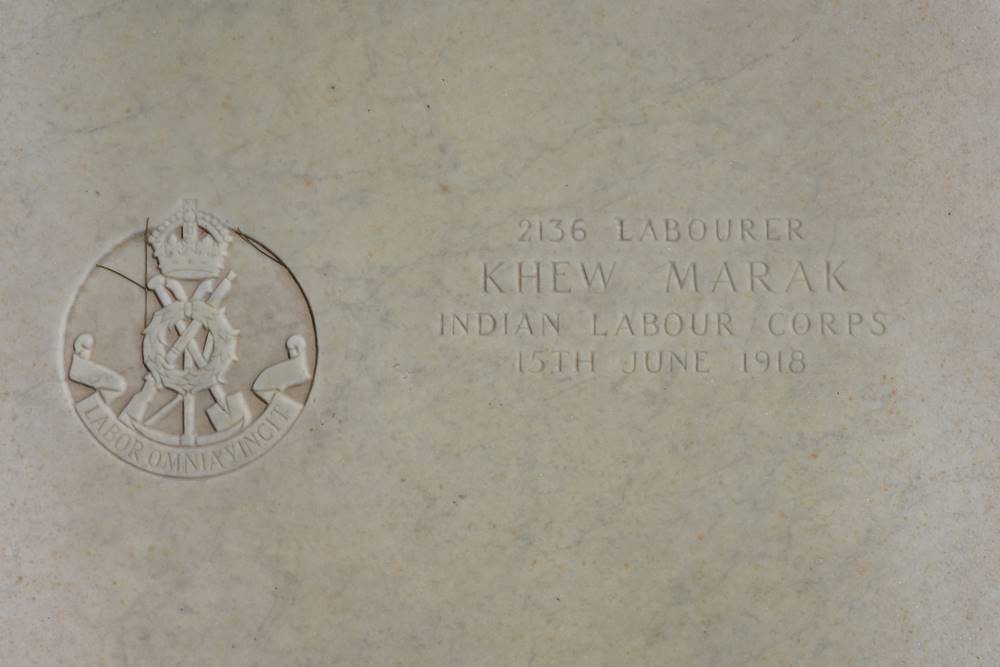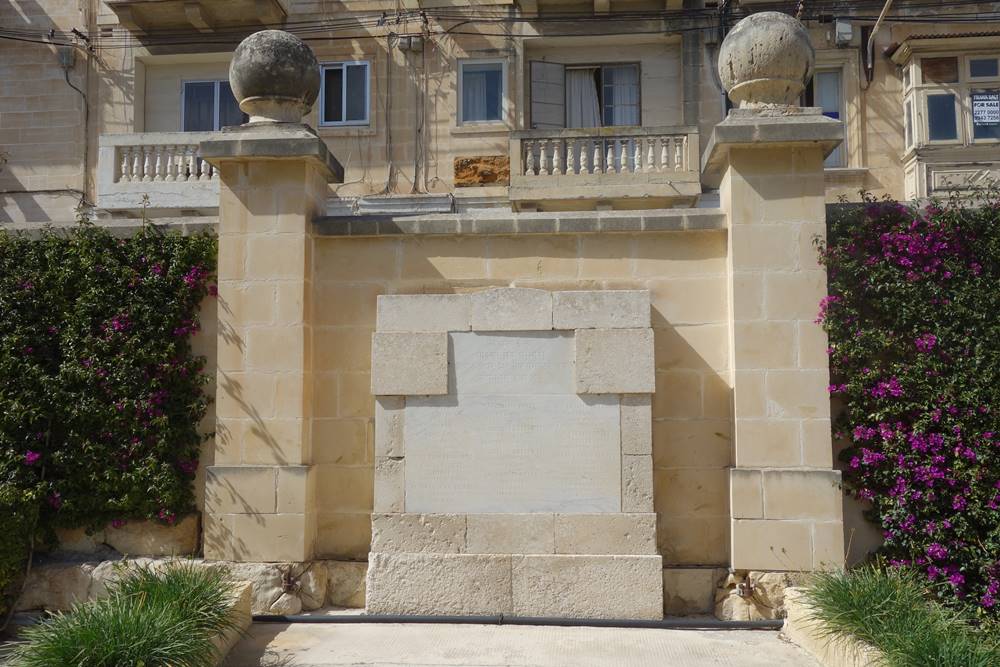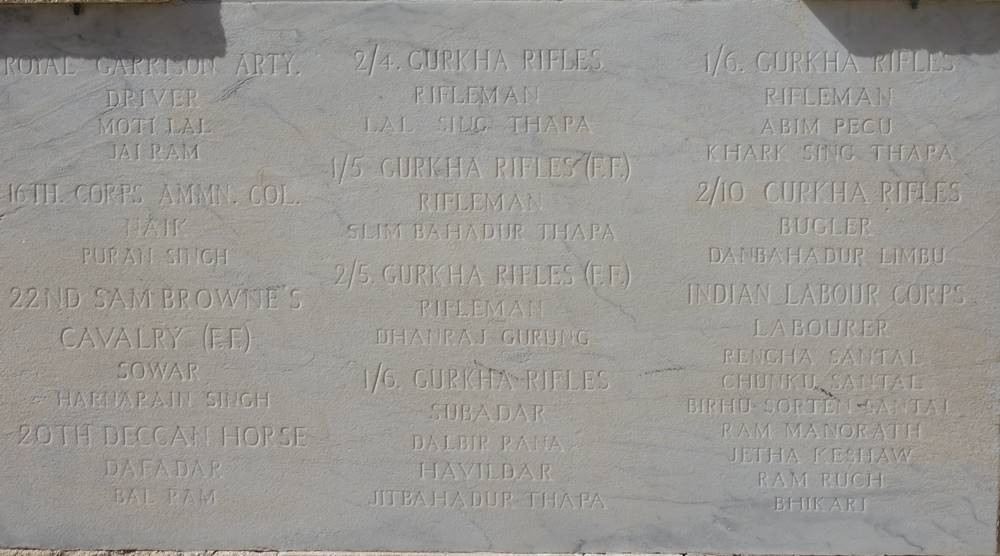This article is about the Indian Memorial at Pieta Military Cemetery and is one of a number of articles I’ve written on First World War cemeteries and memorials in Malta. I have created a separate page on the Pieta Military Cemetery in which the memorial is found and a series of guides to help you research those served in the Indian Army:
Indian Memorial at Pieta Military Cemetery
The Indian Memorial at Pieta Military Cemetery, Malta commemorates twenty soldiers and labourers of the Indian Army who died on the island during the First World War and were cremated at Lazaretto Cemetery. The Lazaretto on Malta was located on Manoel Island, Gzira. All the men were cremated either the day they died or the day after which was the standard practice in an age without widespread refrigeration in a hot climate. The men commemorated were either Hindus or Sikhs from what is now India, Pakistan and Nepal. Whenever it was possible, Hindus and Sikhs were cremated in custom with their faith, while Muslim and Christian soldiers were buried. This wasn’t always the case due to battlefield conditions and human error. Many of the soldiers commemorated on the memorial succumbed to wounds or disease contracted during the Gallipoli Campaign. The Indian Army was involved in the day of the amphibious landings on 25 April.
Of the thirteen soldiers commemorated on the memorial, seven belonged to three Gurkha battalions which saw heavy fighting in the Gallipoli Campaign. Rifleman Bhim Bahadur Thapa died on 20 August 1915 was the only soldier from the 1st Battalion 5th Gurkha Rifles (Frontier Force) commemorated on the memorial. Gurkha regiments used the rank Rifleman rather than Sepoy. Unfortunately, Indian Army service and medal records were destroyed after Partition so Thapa can’t be researched. There are six soldiers from the 1st Battalion 6th Gurkha Rifles on the memorial including Rifleman Aibiria Pun who died on 28 June 1915. Pun is the earliest death commemorated on the memorial and the Commonwealth War Graves Commission recorded he was the “Son of Parbir Pun, of Shina, Parvat, Palpa, Nepal”. It also stated that he was “Killed in action” but as he is commemorated at Pieta instead of on the Helles Memorial he would have died of wounds.
Another soldier who died of their wounds was Havildar Jitbahadur Thapa, also of the 1st Battalion 6th Gurkha Rifles, on 4 August 1915. A Havildar was the equivalent of a Sergeant in the British Army. Jitbahadur Thapa was also wounded at Gallipoli. The surname Thapa appears four times on the memorial and Gurung and Limbu once. These surnames are very common among Gurkhas due to Gurkha regiments recruiting men from specific groups within Nepal. Not all of those commemorated on the memorial served in Gallipoli. Daffadar Bal Ram, B Squadron 20th Deccan Horse died of tuberculosis on 14 August 1918. Respiratory diseases killed a large number of soldiers during the war, especially when Spanish flu began to appear in 1918. A Daffadar was a cavalry rank in the Indian Army equivalent of a Sergeant in the British Army. Bal Ram’s regimental number was 1008 and therefore he enlisted prior to the outbreak of war. He almost certainly served on the Western Front, most likely from 1914 and was probably one of small number of soldiers of the Regiment left behind in France when it moved to the Middle East in early 1918.
On the left-hand side of the memorial, you can see the names of Drivers Moti Lal and Jai Ram who died serving with the Royal Garrison Artillery. Driver Moti Lal died of pneumonia on the 8 January 1918 and his entry on the Commonwealth War Graves Commission website recorded that he was the “son of Durgai, of Ajabpura-ke-Marian, Thana Barapura, Odhi, Farrukabad, United Provinces”. Moti’s unit was recorded as the 68th Heavy Battery, Royal Garrison Artillery, however, this unit never left India. British artillery serving in India often used Indian drivers both for their batteries and ammunition columns. Moti Lal would have been sent to another British Artillery unit, probably serving on the Western Front. He was probably being invalided back to India when he was left at Malta and succumbed to illness.
You can view a full list of those commemorated on the memorial on the Commonwealth War Graves Commission’s website. The link displays all Indians commemorated and buried at Pieta. The burials have a letter followed by Roman numerals underneath Pieta Military Cemetery. As well as a cremation memorial, the Pieta Military Cemetery contains a number of graves to men who served in the Indian Labour Corps. These men were non-combatants and were used for manual labour behind the front line, though often in range of artillery. The gravestone below is to Labourer Khew Marak, who served with the 69th Garo Labour Company and died on 15 June 1918. The Company was formed from Garos who live in North East India. Many of the Garos were Christian, including Khew Marak, which is why he was buried rather than cremated. Marak served with the Company in France before being invalided to Malta where he died. You can read more about the Garo contribution to the war here: Homage to Garo brave hearts of WW1.


